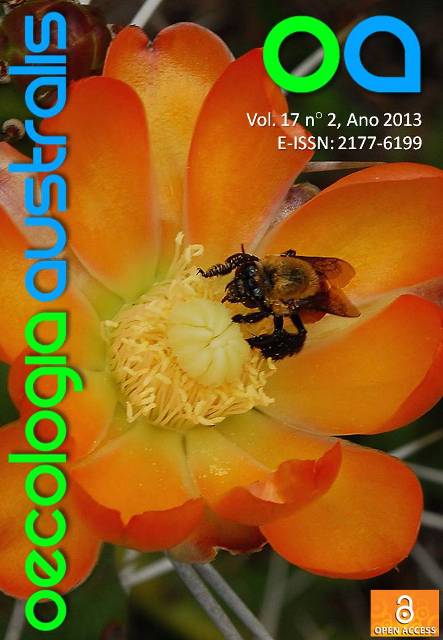THE ROLE OF COMPETITION IN STRUCTURING ANT COMMUNITIES: A REVIEW
Palavras-chave:
coexistence, mosaics, null models, trad-offResumo
Understanding the mechanisms which determine local patterns of diversity is among the primary goals of ecology, and this has advanced in recent decades, including the integration of processes at different scales of space and time. Among these mechanisms highlights the regulatory and competition as a factor structuring biological communities, but it is controversial in ecology. In the Myrmecology, the competition is par excellence as one of the main factors structuring ant communities. Some hypotheses have been supported in empirical studies of natural communities as important mechanisms for species coexistence. The first is the balance competition/colonization, species were distributed along a continuum between good and bad contestants competing colonizing up bad and good colonizers, and their interactions over time would allow a state of constant flux along this continuum. The second hypothesis is the spatial clustering, in which ecologically dominant species have an aggregated spatial distribution, which would increase competition among individuals and species coexistence with subordinates. Besides these there are the trade-off theory and the mosaics, which involve competition and promote coexistence, and also the null models, which are used to determine if competition structures communities of ants. However, the objective is to demonstrate the main mechanisms that involve competition in structuring ant communities.Downloads
Arquivos adicionais
- Lista dos Possíveis Revisores
- Carta de Submissão
- THE ROLE OF COMPETITION IN STRUCTURING ANT COMMUNITIES: A REVIEW
- Primeira Correção do Manuscrito: THE ROLE OF COMPETITION IN STRUCTURING ANT COMMUNITIES: A REVIEW
- Carta ao editor com justificativas aos pareceres
- Primeira THE ROLE OF COMPETITION IN STRUCTURING ANT COMMUNITIES: A REVIEW
- THE ROLE OF COMPETITION IN STRUCTURING ANT COMMUNITIES: A REVIEW_English reviewer
Publicado
2017-02-21
Edição
Seção
Artigos


